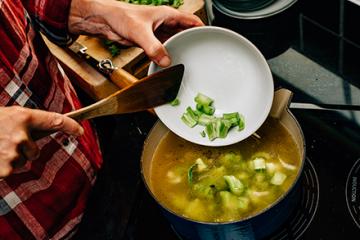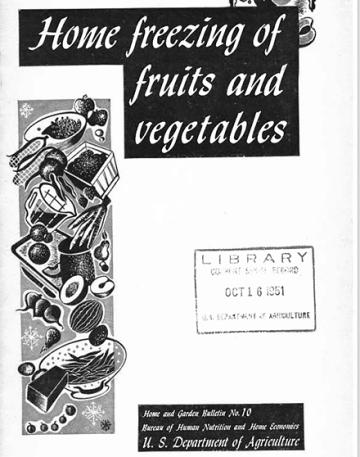Look at Leftovers to Reduce Food Waste

The average American family loses $1,500 each year from uneaten food, according to the USDA’s Economic Research Service. USDA helps Americans maximize their food budgets and reduce food waste at home by publishing recipes, guidance, and resources. While USDA recommendations evolve based on the latest research, many suggestions from the past can still help people to produce less waste today. Save more food with these two tips for using what is on hand.
1. Find ways to use ingredients that you might typically discard. Foods can be past their prime but still safe to eat. Whole grain bread that has turned hard can be used for French toast or a strata—an egg-and-bread casserole. Vegetables that have wilted could be added to a soup or stew.
As early as the 1940s, the USDA’s Bureau of Home Economics encouraged Americans to repurpose edible parts of food that are often wasted to get more nutrition. For example, many Americans eat only the broccoli florets and leave the stems, throwing away nutrition and money. But cooked separately, for a bit longer than the tops to soften them, broccoli stems provide calcium, iron, and zinc. Serve with the tops, or save to pair with another meal as a separate vegetable. This tip, and others, can be found in the radio transcript, “Salvaging Waste Parts of Vegetables.”

USDA’s Home and Garden Bulletins provided guidance on storing foods to keep them fresh for longer. Methods included freezing, drying, and canning. (Photo courtesy of U.S. Bureau of Human Nutrition and Home Economics, 1951. Home Freezing of Fruits and Vegetables.)
2. Reuse or freeze leftovers. Make the most of food purchases by using leftover dishes in new recipes. For example, roasted vegetables can be added to a salad or omelet, and leftover tomato sauce can be used for a pita pizza or baked pasta. In the past, USDA shared steps for safe freezing of perishable foods in their Home and Garden Bulletins, including “Home Freezing of Fruits and Vegetables” (1951). Today, freezing leftovers continues to be a way to keep food fresh for longer and is less time consuming than canning. Make use of grocery sales, roadside stands and farmers markets to purchase inexpensive quantities for freezing and enjoying later. For example, the bulletin above shares how to freeze fresh string beans: blanch in boiling water for 3 minutes, run under cold water, then bag and freeze. It is that quick and easy.
Ingredients, like chopped fruits and vegetables, and leftover dishes, like soups, stews and sauces, can be frozen to preserve their safety and quality. Simply thaw them in the refrigerator or under cold running water to prepare them for later use.
Spring may be known as a time for cleaning the home, but it can also be a time for “cleaning” food waste habits to help put more food and nutrients on the table instead of the trash. Discover more ways to make the most of your food when preparing and cooking meals on Nutrition.gov. – by Colleen Sideck, MPH, RDN, Food and Nutrition Information Center, National Agricultural Library

